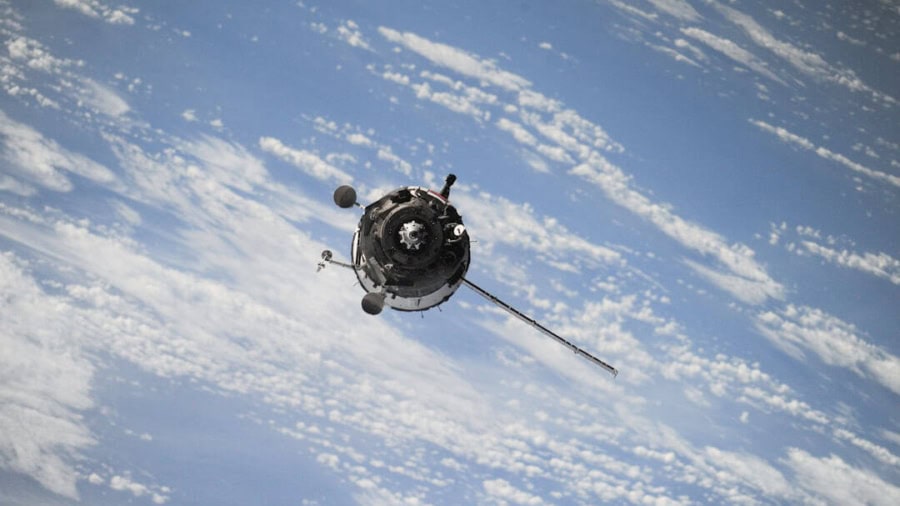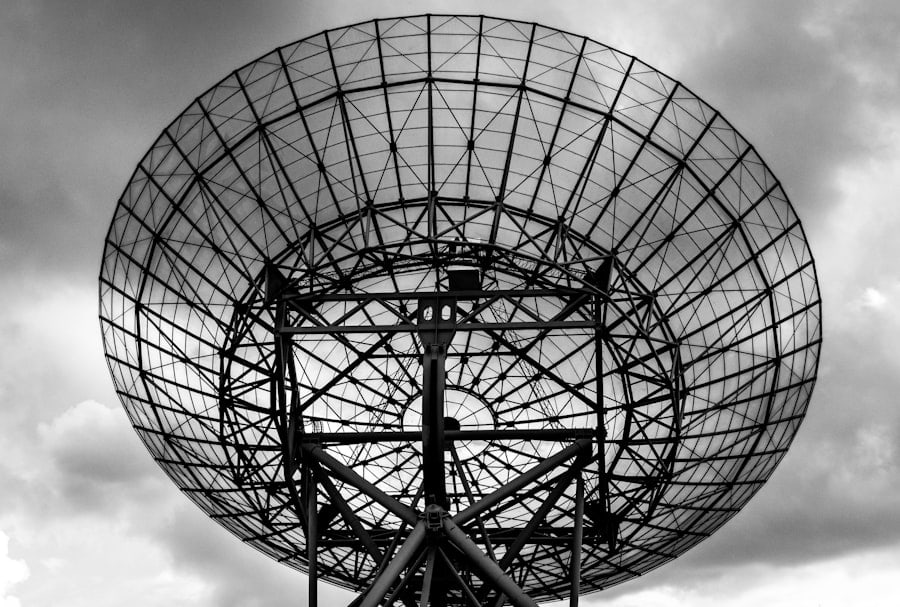The advent of satellite technology has revolutionized the way we communicate, navigate, and gather information about our planet. Among the most innovative developments in this field is the concept of satellite swarms. Unlike traditional satellite constellations, which typically consist of a limited number of large satellites operating in fixed orbits, satellite swarms comprise a multitude of smaller satellites working collaboratively.
This approach allows for enhanced coverage, improved data collection, and greater resilience against failures. The idea of deploying numerous small satellites in a coordinated manner has gained traction in recent years, driven by advancements in miniaturization, communication technologies, and the decreasing costs of launching payloads into space. Satellite swarms can be likened to a flock of birds or a school of fish, where each unit operates semi-autonomously while contributing to the collective mission.
This decentralized approach not only increases the efficiency of data transmission but also enhances the robustness of communication networks. As global demand for connectivity continues to rise, particularly in remote and underserved regions, satellite swarms present a promising solution to bridge the digital divide. The ability to deploy and manage these swarms effectively is crucial for addressing the challenges posed by an increasingly interconnected world.
Key Takeaways
- Satellite swarms are a group of small satellites working together in a coordinated manner to achieve a common goal, such as global communication coverage.
- Satellite swarms play a crucial role in global communication systems by providing widespread coverage, reducing latency, and increasing network capacity.
- Using satellite swarms for communication offers advantages such as cost-effectiveness, flexibility, and resilience to system failures.
- Challenges and limitations of satellite swarms include orbital debris, frequency interference, and the need for advanced coordination and control systems.
- The future of satellite swarms in global communication systems looks promising, with potential advancements in technology and increased integration with 5G networks.
The Role of Satellite Swarms in Global Communication Systems
Overcoming Terrestrial Infrastructure Limitations
They are particularly beneficial in scenarios where terrestrial infrastructure is lacking or insufficient. For instance, rural areas, disaster-stricken regions, and maritime environments often suffer from limited connectivity due to the absence of ground-based networks. Satellite swarms can fill these gaps by establishing reliable communication links that are not dependent on terrestrial infrastructure.
Facilitating Real-Time Data Sharing
Moreover, satellite swarms can facilitate real-time data sharing across vast distances. This capability is essential for various applications, including telemedicine, remote education, and emergency response operations.
Enhancing Quality of Life and Critical Services
By enabling seamless communication between users and service providers, satellite swarms can significantly enhance the quality of life for individuals in remote areas. Additionally, they can support critical services such as weather monitoring and disaster management by providing timely information that can save lives and mitigate risks.
Advantages of Using Satellite Swarms for Communication
One of the primary advantages of satellite swarms is their ability to provide enhanced coverage and redundancy. With multiple satellites operating in concert, the likelihood of losing connectivity due to a single point of failure is significantly reduced.
For example, in military operations or emergency response scenarios, having multiple satellites available ensures that communication links remain intact even if one or more satellites experience technical issues. Another significant benefit of satellite swarms is their scalability. As demand for data increases, additional satellites can be deployed to expand the network’s capacity without the need for extensive ground infrastructure upgrades.
This flexibility allows operators to respond quickly to changing user needs and technological advancements. Furthermore, the modular nature of satellite swarms means that they can be tailored to specific applications or regions, optimizing performance based on local requirements.
Challenges and Limitations of Satellite Swarms
Despite their numerous advantages, satellite swarms also face several challenges and limitations that must be addressed for successful implementation. One major concern is the issue of space debris. As more satellites are launched into orbit, the risk of collisions increases, potentially leading to the creation of additional debris that could threaten both operational satellites and future missions.
Effective space traffic management strategies will be essential to mitigate this risk and ensure the long-term sustainability of satellite swarms. Another challenge lies in the complexity of coordinating multiple satellites. Managing a swarm requires sophisticated algorithms and communication protocols to ensure that each satellite operates effectively while maintaining synchronization with others.
This complexity can lead to increased operational costs and technical hurdles that must be overcome during deployment and maintenance phases. Additionally, ensuring secure communication within a swarm is critical, as vulnerabilities could be exploited by malicious actors seeking to disrupt services or gain unauthorized access to sensitive information.
The Future of Satellite Swarms in Global Communication Systems
The future of satellite swarms in global communication systems appears promising as technological advancements continue to evolve. Innovations in artificial intelligence (AI) and machine learning are expected to play a significant role in enhancing the autonomy and efficiency of satellite swarms. These technologies can enable real-time decision-making processes that allow satellites to adapt to changing conditions and optimize their operations without human intervention.
Moreover, as the demand for high-speed internet access grows globally, particularly in developing regions, satellite swarms are likely to become an integral part of efforts to bridge the digital divide. Initiatives aimed at providing affordable internet access through satellite technology are already underway, with companies like SpaceX’s Starlink and OneWeb leading the charge. These projects aim to deploy thousands of small satellites into low Earth orbit (LEO), creating a robust network capable of delivering high-speed internet services to underserved populations.
Case Studies: Successful Implementation of Satellite Swarms
Several successful implementations of satellite swarms have demonstrated their potential in enhancing global communication systems. One notable example is the European Space Agency’s (ESA) Swarm mission, which consists of three satellites designed to study Earth’s magnetic field. Launched in 2013, these satellites work together to provide high-resolution data on magnetic field variations, contributing valuable insights into geophysical processes and climate change.
Another prominent case is SpaceX’s Starlink project, which aims to create a constellation of thousands of small satellites in low Earth orbit to provide global broadband internet coverage. As of late 2023, Starlink has already launched over 3,000 satellites and has begun offering services in various regions worldwide. The project has garnered attention not only for its ambitious scale but also for its potential to transform internet access in remote areas where traditional infrastructure is lacking.
Regulatory and Ethical Considerations for Satellite Swarms
The proliferation of satellite swarms raises important regulatory and ethical considerations that must be addressed to ensure responsible use of space resources. One key issue is the need for international cooperation in managing space traffic and preventing collisions between satellites. As more countries and private entities enter the space arena, establishing clear guidelines and frameworks for satellite operations will be crucial to maintaining safety and sustainability in orbit.
Additionally, ethical concerns surrounding data privacy and security must be taken into account as satellite swarms become more integrated into everyday life. The collection and transmission of vast amounts of data raise questions about who has access to this information and how it is used. Ensuring that robust security measures are in place to protect sensitive data from unauthorized access will be essential for building public trust in satellite-based communication systems.
The Impact of Satellite Swarms on Global Communication Systems
The emergence of satellite swarms represents a transformative shift in global communication systems, offering unprecedented opportunities for connectivity and data sharing across diverse environments. By leveraging the advantages of redundancy, scalability, and real-time data transmission capabilities, these swarms have the potential to address critical challenges faced by underserved populations while enhancing overall communication infrastructure. As we look toward the future, it is clear that satellite swarms will play an increasingly vital role in shaping how we connect with one another and access information on a global scale.
However, navigating the associated challenges—such as space debris management and regulatory compliance—will require collaborative efforts among governments, private companies, and international organizations. By addressing these issues proactively, we can harness the full potential of satellite swarms while ensuring a sustainable and equitable future for global communication systems.
A related article to How Satellite Swarms Are Advancing Global Communication Systems can be found on Wired.com.
It provides insights into the latest advancements in technology and how they are revolutionizing the way we communicate on a global scale.
FAQs
What are satellite swarms?
Satellite swarms are groups of small satellites that work together in a coordinated manner to achieve a common goal, such as providing global communication coverage.
How do satellite swarms advance global communication systems?
Satellite swarms can provide more comprehensive and reliable global communication coverage by working together to fill in coverage gaps and ensure continuous connectivity.
What are the advantages of using satellite swarms for global communication systems?
Some advantages of using satellite swarms for global communication systems include increased redundancy, lower costs, and the ability to adapt to changing communication needs more quickly.
What are some examples of satellite swarms in use for global communication systems?
One example of a satellite swarm in use for global communication systems is the Starlink constellation developed by SpaceX, which aims to provide high-speed internet access to underserved areas around the world.
What are the potential future developments for satellite swarms in global communication systems?
Future developments for satellite swarms in global communication systems may include increased integration with other technologies, such as 5G networks, and the use of artificial intelligence for more efficient coordination and management.



